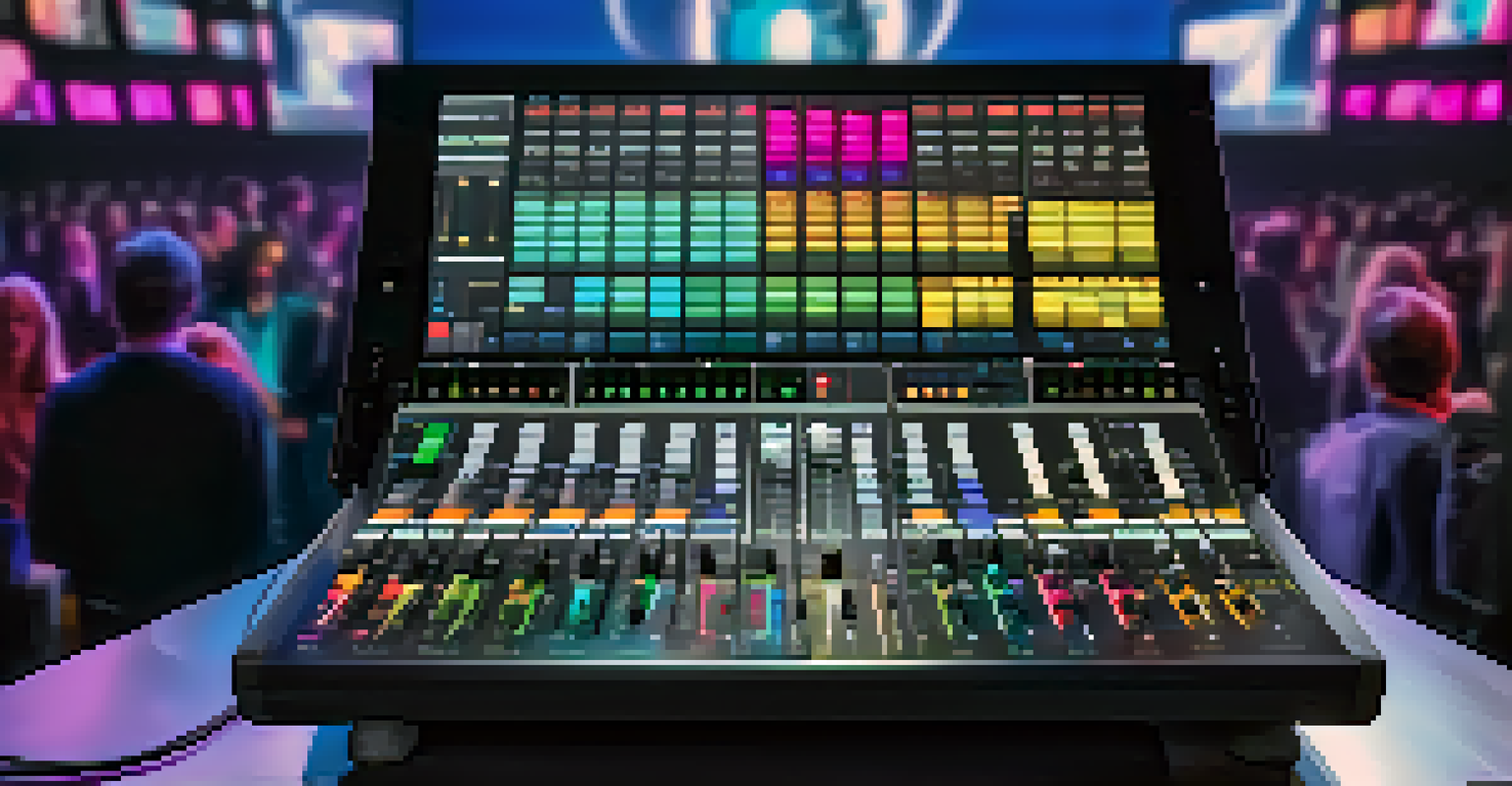Understanding the Different Types of Live Sound Systems

What is a Live Sound System and Why is it Important?
A live sound system is a collection of audio equipment designed to amplify sound for live events, such as concerts or public speaking. These systems ensure that every note, word, and beat is heard clearly by the audience, creating an immersive experience. Without a proper sound system, even the most talented performers can struggle to connect with their audience.
Music can change the world because it can change people.
The importance of a live sound system can’t be overstated; it’s the backbone of any live performance. Imagine attending a concert where the singer’s voice is drowned out by the instruments, or worse, where the sound is so distorted that you can’t enjoy the music. A well-balanced sound system prevents such scenarios and enhances the overall enjoyment of the event.
Ultimately, a live sound system plays a crucial role in delivering high-quality audio that captivates audiences. Understanding the different types of sound systems available can help event organizers choose the right setup for their needs.
PA Systems: The Heartbeat of Live Sound Events
Public Address (PA) systems are among the most common types of live sound systems used for events. They are designed to amplify the human voice, making them ideal for speeches, announcements, and small performances. A basic PA system typically includes microphones, speakers, and a mixer, allowing for clear audio delivery.

These systems can vary greatly in size and complexity, from simple setups with a single microphone and speaker to larger configurations with multiple channels and effects. For instance, a small community gathering might only need a portable PA system, while a concert in a stadium requires a sophisticated multi-speaker setup to reach thousands of people.
Importance of Live Sound Systems
A live sound system is essential for amplifying audio at events, ensuring clarity and connection between performers and their audience.
In essence, PA systems are versatile and essential for ensuring that everyone in attendance can hear what’s happening. Whether it’s a wedding toast or a political rally, a well-implemented PA system can make all the difference.
Line Array Systems: Powering Large Venues
Line array systems are a type of sound reinforcement system specifically designed for large venues and outdoor events. They consist of multiple speakers arranged in a vertical line, allowing for even sound distribution across a large area. This setup minimizes sound loss and distortion, ensuring that even those in the back row can hear clearly.
The only thing better than singing is more singing.
These systems are particularly popular at music festivals and concerts, where sound quality is paramount. With their ability to project sound over long distances without compromising clarity, line array systems have become the go-to choice for many event organizers. Imagine attending a festival where every note from your favorite band resonates perfectly, no matter where you stand—that’s the power of line array systems.
While they may require more setup and technical expertise, the results are often worth the investment. For large-scale events, a line array system can create an unforgettable audio experience.
Monitor Systems: Keeping Performers in the Loop
Monitor systems are an essential component of any live sound setup, designed specifically for performers. These systems allow artists to hear themselves and their fellow musicians while on stage, ensuring that they stay in tune and in rhythm. Without proper monitoring, performers can struggle to deliver their best performance.
Stage monitors come in various forms, including wedge-shaped speakers and in-ear monitors. Wedges are typically placed on the stage floor, directing sound towards the performers, while in-ear monitors provide a more personalized listening experience. Imagine a singer relying on a wedge monitor only to hear the drums drowning out their voice—it’s a recipe for disaster.
Choosing the Right System Matters
Selecting the appropriate sound system tailored to the venue and performance type is crucial for delivering an unforgettable experience.
Effective monitor systems are crucial for maintaining performance quality and helping artists connect with their music. By ensuring that performers have a clear audio reference, monitor systems play a vital role in delivering outstanding live performances.
Digital Mixers: The Control Center of Sound Systems
Digital mixers have revolutionized the way sound is managed at live events, offering unprecedented control and flexibility. Unlike traditional analog mixers, digital mixers use software to manipulate audio signals, allowing for complex sound manipulation and easy adjustments on the fly. This technology has made it easier for sound engineers to achieve the perfect mix.
These mixers often come equipped with features like built-in effects, EQ settings, and the ability to save presets for different performances. For example, a sound engineer can quickly switch between settings for a rock band and a classical ensemble, ensuring optimal sound quality for each performance. Imagine having the power to fine-tune every aspect of the audio instantly at your fingertips—that’s the beauty of digital mixers.
Ultimately, digital mixers enhance the overall sound quality and streamline the mixing process, making them a valuable asset for any live sound team. Their adaptability ensures that sound engineers can meet the unique needs of each event seamlessly.
Wireless Systems: Freedom of Movement on Stage
Wireless sound systems have become increasingly popular in live sound setups, offering performers the freedom to move without being tethered to a microphone or instrument cable. These systems use radio frequencies to transmit audio signals, enabling artists to engage with their audience more dynamically. Imagine a lead singer dancing around the stage without worrying about tripping over cables—this is the magic of wireless technology.
While wireless systems provide flexibility, they also come with their own set of challenges, such as potential interference and battery life concerns. Proper planning and setup are essential to ensure that the wireless signals remain clear and uninterrupted. For instance, a thoughtful sound engineer will scout the venue for potential interference sources before the show.
Wireless Systems Enable Performer Freedom
Wireless sound systems enhance performers' mobility on stage, allowing for more dynamic engagement with the audience.
Despite these challenges, the benefits of wireless systems often outweigh the drawbacks, allowing performers to connect with their audience more authentically. For many artists, this freedom is crucial to delivering a captivating performance.
Choosing the Right Live Sound System for Your Event
Selecting the appropriate live sound system for your event can seem daunting, but it doesn't have to be. The key factors to consider include the size of the venue, the type of performance, and your budget. For example, a small acoustic set may only need a basic PA system, while a rock concert in a large arena requires a comprehensive line array setup.
Additionally, understanding the specific needs of your performers is crucial. Some artists may require in-ear monitors for a more controlled audio experience, while others may prefer traditional stage monitors. Consulting with sound professionals can help you identify the best options for your event, ensuring that both performers and audience members have a great experience.

Ultimately, the right sound system can elevate your event to new heights. By taking the time to assess your needs and options, you can create an unforgettable audio experience that resonates with everyone in attendance.